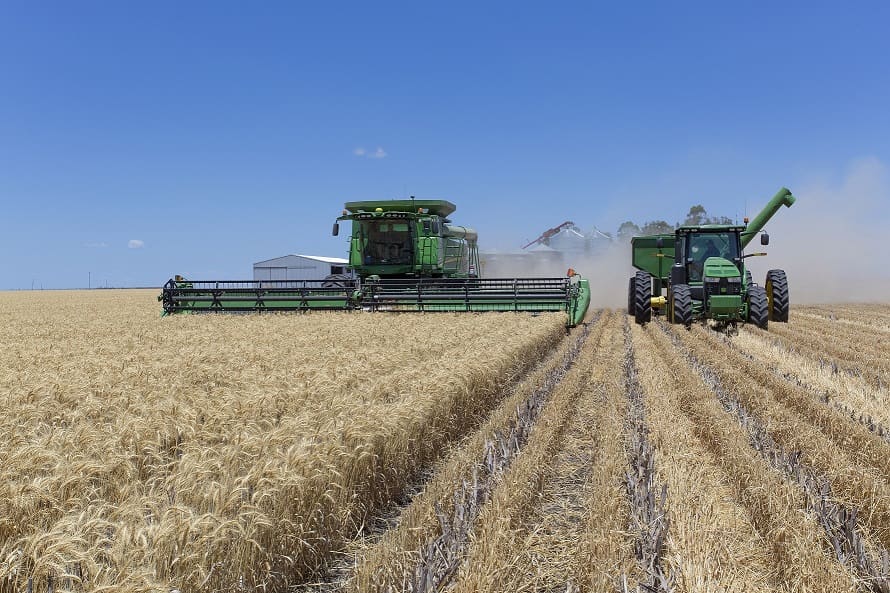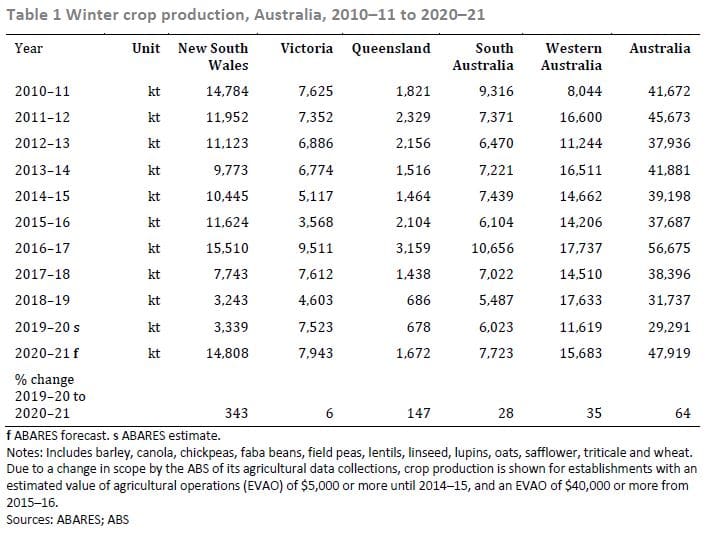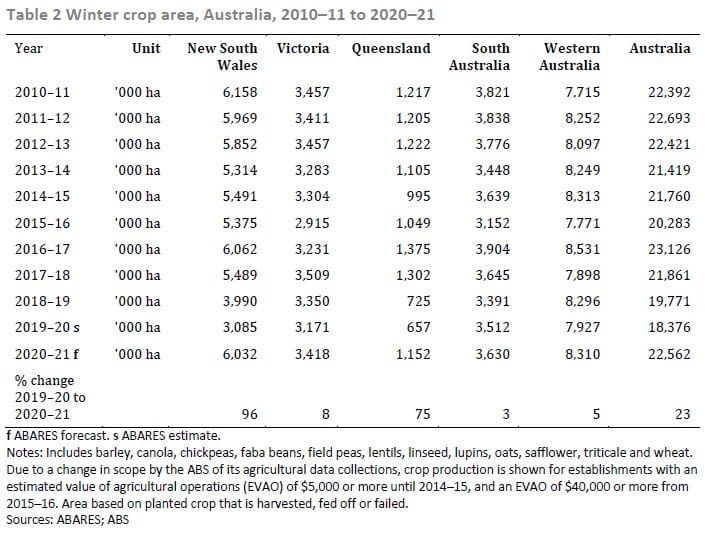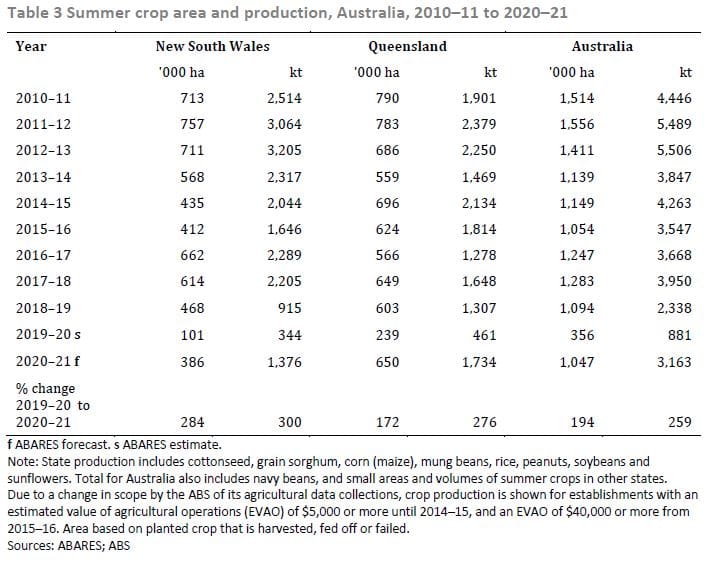
AUSTRALIAN winter crop production is forecast to increase by 64 per cent in 2020-21, with New South Wales expected to have its second biggest winter crop in a decade, according to ABARES’ September 2020 Australian Crop Report released today.
The report has found that winter crop prospects in Australia are generally average to above average at the beginning of spring.
In an 8pc upward revision from the ABARES June 2020 forecast, winter crop production is forecast to be 47.9 million tonnes (Mt) in 2020–21, 20 per cent above the 10-year average to 2019–20 of 40Mt.

ABARES executive director Steve Hatfield-Dodds said crop prospects were strongest in NSW where favourable winter rainfall and a strong start to the season were expected to result in well above average production.

Steve Hatfield-Dodds
“Increased production in New South Wales has accounted for 60 per cent of the forecast increase in production nationally,” Mr Hatfield-Dodds said.
“New South Wales production is forecast to be 14.8 million tonnes in 2020-21—that’s more than a 300 per cent increase on last year and the highest since 2016-17.
“Crop prospects are average to above average in Victoria, South Australia, Western Australia and southern Queensland, despite warmer than average temperatures and below average rainfall in June and July.
“Soil moisture levels and timely rainfall were sufficient to sustain established crops through this period. Timely August rainfall provided a boost to yield prospects in many regions.
“However, it is expected August rainfall was generally insufficient for crops in central and northern cropping regions in Queensland to achieve average yields.”
ABARES estimates the area planted to winter crops in 2020–21 to have increased by 23pc to 22.6 million hectares from the drought affected season in 2019–20.
In New South Wales, the area planted is estimated to be six million hectares—almost double that from 2019-20.

The Bureau of Meteorology’s latest three-month climate outlook (September to November), issued on 3 September 2020, indicates spring rainfall is likely to be above average in most cropping regions.
However, in WA the outlook is mixed, with below average spring rainfall most likely for the Geraldton zone and part of the Kwinana zone.
Major crops
For the major winter crops, wheat production is forecast to increase by 91pc to 28.9Mt, 22pc above the 10-year average to 2019-20.
Barley production is forecast to increase by 25pc to 11.2Mt, 23pc above the 10-year average to 2019-20.
Canola production is forecast to rise by 47pc to 3.4Mt, 4pc above the 10-year average to 2019-20.
Amongst other crops, chickpeas production is forecast to increase by 152pc to 708,000t and oats production is forecast to increase by 93pc to 1.7Mt.
Summer prospects
Summer crops also look set for a boost from last year. The area planted to summer crops in 2020–21 is forecast to rise by 194pc to around 1Mha, 11pc below the 10-year average to 2019–20 of 1.2Mha.
The area planted to rice is forecast to increase by almost 400pc to around 27,000ha because of higher water allocations compared to the drought affected allocations in the last two years.
The area planted to grain sorghum is forecast to rise by around 300pc to 595,000ha, 13pc above the 10-year average to 2019–20 of 525,000ha.
The area planted to cotton is forecast to rise by 300pc in 2020–21 to 239,000ha, 40pc below the 10-year average to 2019–20.

Source: ABARES
Grain Central: Get our free daily cropping news straight to your inbox – Click here



HAVE YOUR SAY